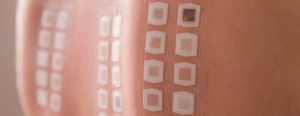Claim Substantiation Services

Bell Clinical Services can provide a wide range of laboratory tests to substantiate a variety of claims that you might wish to make for your skin care products. We can evaluate your product for performance along numerous skin care dimensions. We can also compare the efficacy of your formulation to that of the leading brands. Listed below are the tests that we currently offer. We can also work closely with the customer to develop tests for other measurement parameters.
- Cumulative Irritation Patch Test (CIP)
To determine the potential for irritation of a test product: 48-hour, 7-day, 14-day, 21-day, or custom length - Human Repeat Insult Patch Test (HRIPT)
To determine the potential for sensitization, and allergic reaction of a product. To confirm the absence of a delayed skin sensitizer in a formula. - Patch Test for Irritancy: Single Closed Application
To confirm the skin compatibility of a product after a 24/48-hour single application under a patch. - Patch Test for Irritancy: Repeated Closed Application (14-Days or 21-Days)
To confirm the absence of cumulative irritant potential of a product after repeated applications under a patch. - Open Test for Irritancy: Single or Repeated Open Application
To confirm the compatibility of a product after one or several applications under controlled conditions very close to normal conditions of use. - Open Test for Irritancy on the Elbow Fold
To confirm the skin compatibility of a product after repeated application under controlled and slightly exaggerated conditions. - Non-Comedogenicity / Non-Acnegenecity
To check the non-comedogenicity / non-acnegenicity and confirm the skin acceptability of a product after repeated applications under normal conditions of use. - Sensitization Test
To confirm the absence of delayed contact sensitization potential and assess the skin compatibility of a product after repeated applications under maximizing conditions. - In Use Test for Irritancy Under Clinical Control
To confirm the acceptability of the product after repeated application under normal conditions of use. - Phototoxicity Test
To confirm the absence of phototoxic potential of a product, after single application under a patch and UVA exposure. - Photosensitization Test
To confirm the absence of photosensitization potential of a product, after repeated applications under a patch and UV exposure. - Frosch-Kligman Soap Chamber Test
The Frosch-Kligman soap chamber test assesses the irritancy of soaps. This test method is a very sensitive test of soap irritancy. Results obtained by this method contrast with a number of studies which fail to show differences among soaps, or which concluded that soaps were innocuous. - Reflectance Confocal Laser Microscopy
General Skin Health and Changes in Skin Health. Anti-aging product efficacy. Moisturization. Skin Barrier health. - Trans Epidermal Water Loss (TEWL)
This test, in combination with other tests, provided information on skin moisturization and skin barrier health. - Skin Hydration
The level of skin hydration, and changes in the level of skin hydration, can be acurately assessed by measuring the skin conductivity. - Ultrasound Measurement
Deep skin health and skin thickness can be assessed using ultrasound measurements. - Skin pH
The pH of the skin, and changes in tge skin pH, are indicitive of skin health and product benefits to tye skin. - Sebum
Measurements of the skin sebum level, and changes in the amount of skin sebum, can be used to assess the effect of topical products, or ingestible products, on the skin’s production of skin surface oils. - Skin Elasticity
A quantitive measure of skin elasticity and skin recovery behavior can be benificial in supporting certain types of product claims. - Skin Temperature
Precise measurements of skin temperature can be performed in real-time. - Skin Color
Skin color data can be used to evaluate skin-lightening products and skin-tone uniformity. - Anti-Aging Assessment
Software enhansed wrinkle quantification can assist in evaluating the efficacy of anti-aging products. - Oral Malodor Evaluation
Gas Chromatographic methods are used to measure the level of oral malodor in subjects. The efficacy of oral care products at eliminating oral malodor can be evaluated.